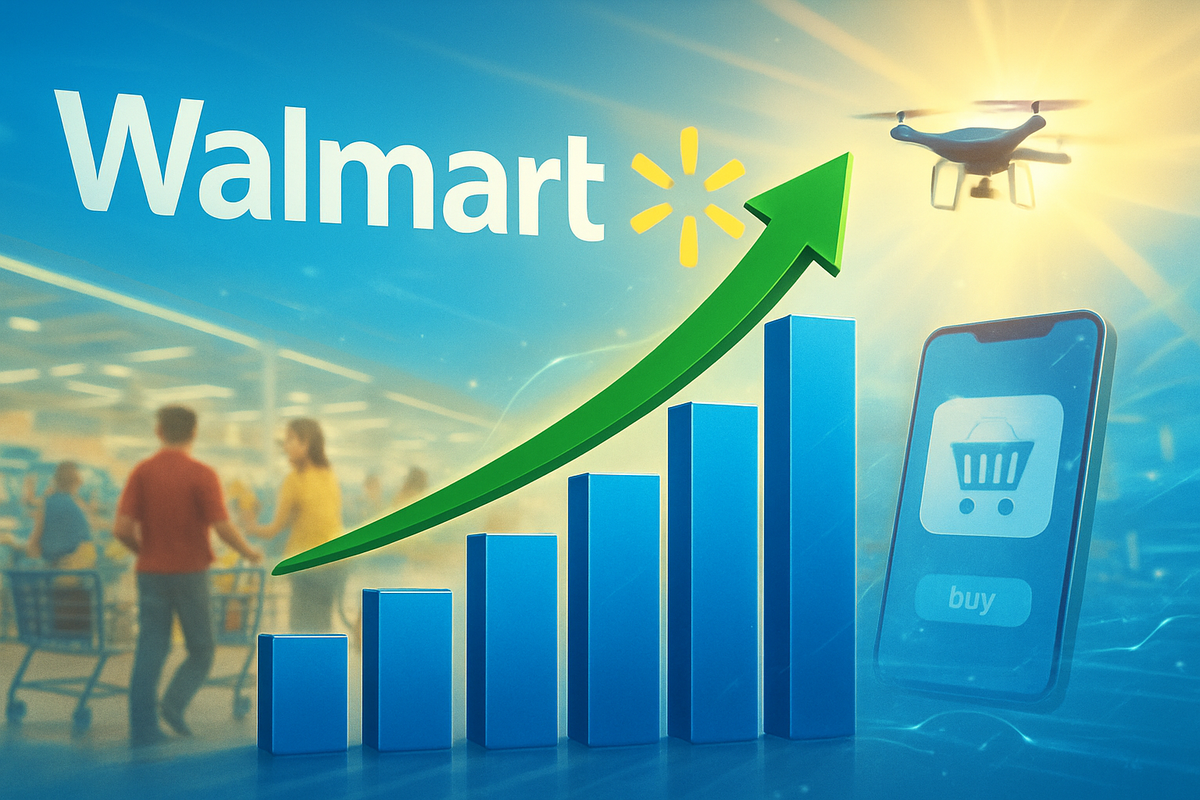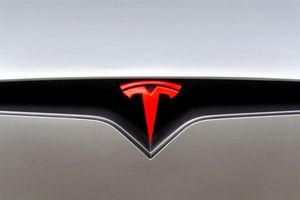
Walmart (NYSE: WMT) reported robust third-quarter fiscal year 2026 results (corresponding to Q3 calendar year 2025) on November 20, 2025, exceeding analyst expectations and leading the company to raise its full-year outlook. Despite the strong performance, the immediate market reaction was somewhat mixed before the stock ultimately surged. The retail giant posted total revenue of $179.5 billion, representing a 5.8% increase year-over-year, and adjusted EPS came in at $0.62, outperforming analyst consensus estimates. This strong showing, particularly amidst persistent inflationary pressures and a more price-sensitive consumer environment, indicates Walmart's continued market share gains and strategic resilience.
This impressive financial performance, coupled with a confident upward revision of its full-year guidance, sends a strong signal across the retail sector and the broader market. It highlights Walmart's effective navigation of current economic challenges and its successful pivot towards a tech-powered omnichannel strategy, setting a new benchmark for competitors and offering a glimpse into the evolving landscape of consumer retail.
Walmart's Q3 Triumph: A Deep Dive into Performance and Strategic Shifts
Walmart's financial performance for the quarter ending October 31, 2025, demonstrated significant strength across several key metrics. Total revenue reached $179.5 billion, a 5.8% increase year-over-year, comfortably surpassing analyst estimates. Adjusted Earnings Per Share (EPS) came in at $0.62, outperforming consensus. The company's consolidated net income attributable to Walmart Inc. (NYSE: WMT) surged to $6.14 billion, a substantial 33% increase compared to the prior year. This robust growth was underpinned by a 4.5% increase in Walmart U.S. comparable sales, excluding fuel, driven by both increased transactions and average ticket size.
A significant highlight was the impressive 27% growth in global eCommerce sales, fueled by store-fulfilled pickup and delivery services, as well as marketplace expansion. Walmart's global advertising business also experienced a robust 53% growth, including VIZIO (NYSE: VZIO), with Walmart Connect in the U.S. growing 33%. Membership and other income increased by 9.0%, with Walmart+ membership growing at a double-digit pace across all income cohorts, further cementing customer loyalty.
Following these strong results, Walmart's management expressed confidence heading into the holiday season and decided to lift its full-year fiscal year 2026 outlook. The company raised its full-year adjusted EPS guidance to a range of $2.58 to $2.63 per share, an increase from its previous guidance. Net sales growth is now anticipated between 4.8% and 5.1%, and operating income growth is expected in the range of 8.5% to 9.25%. This upward revision is attributed to consistent outperformance, particularly surging online sales and continued market share gains in key categories.
The immediate market reaction on November 20, 2025, was initially varied, with some reports indicating an initial dip in pre-market trading, suggesting that the strong results might have been largely anticipated. However, Walmart's shares later jumped significantly, becoming one of the S&P 500's top gainers and surging more than 6% to lead the Dow, reflecting renewed investor confidence. Concurrently, Walmart also announced its decision to transfer the listing of its common stock to The Nasdaq Stock Market LLC (NASDAQ) from the New York Stock Exchange (NYSE), effective December 9, 2025. This strategic move, while retaining its "WMT" ticker symbol, aims to align with Walmart's evolving identity as a tech-powered, omnichannel retailer.
Winners and Losers: Walmart's Ripple Effect Across the Retail Landscape
Walmart's strong third-quarter fiscal year 2026 results and lifted annual outlook are set to create significant ripple effects across the retail ecosystem, impacting both its partners and competitors. The company's ability to exceed Wall Street expectations, with robust revenue and EPS growth, particularly amidst persistent inflationary pressures, indicates its continued market share gains and strategic resilience.
Among the clear winners are Walmart's Existing Suppliers. Large consumer goods companies like Procter & Gamble (NYSE: PG), electronics providers such as HP Inc. (NYSE: HPQ), and specialized firms like Plug Power Inc. (NASDAQ: PLUG), which supplies energy cells for warehouse operations, are likely to benefit from increased order volumes. Additionally, Walmart's initiatives to solicit more U.S.-made suppliers create significant opportunities for small and medium-sized domestic businesses. Companies in logistics and fulfillment technology, as well as digital advertising platforms like Walmart Connect, also stand to gain from Walmart's accelerated e-commerce growth and surging advertising business. Technology and AI providers, in particular, will find increased opportunities as Walmart transforms into a "tech-powered omnichannel retailer."
Conversely, Direct Retail Competitors face intensified pressure. Target (NYSE: TGT), which often competes directly with Walmart for general merchandise and groceries, could see further erosion of its market share, especially as Walmart attracts higher-income households. Target recently posted a fall in quarterly sales, underscoring these concerns. Regional grocers and other mass merchandisers like Kroger (NYSE: KR), Aldi, and Lidl will also struggle against Walmart's dominance in the grocery sector and its ability to "strong-arm" suppliers for lower costs. Even Costco (NASDAQ: COST), operating on a membership model, could see some customer base shift as Walmart expands its Walmart+ offerings.
E-commerce competitors, especially smaller players, will find it increasingly difficult to compete with Walmart's significant 27% global e-commerce growth, price, speed, and omnichannel capabilities. While Amazon (NASDAQ: AMZN) remains a formidable rival, Walmart's digital acceleration narrows the gap. Specialty retailers in overlapping categories, such as electronics (Best Buy (NYSE: BBY)) or home improvement (Home Depot (NYSE: HD), Lowe's (NYSE: LOW)), could also lose market share as budget-conscious consumers consolidate their shopping at Walmart due to its compelling value proposition. Home Depot recently reported lower-than-expected demand, further highlighting the challenging environment.
Wider Significance: Walmart's Performance as a Retail Bellwether
Walmart's strong Q3 2025 results and upwardly revised outlook carry significant implications across the broader retail industry, reflecting shifting consumer behaviors, the increasing importance of omnichannel strategies, and ongoing technological transformations. This performance solidifies Walmart's position as a resilient retail leader amidst a challenging economic landscape. A key takeaway is Walmart's ability to attract a broad customer base, including higher-income households, who are increasingly seeking value amidst persistent inflation and a cooling job market.
This success aligns with and accentuates several overarching retail industry trends. Value-Driven Consumer Behavior is paramount, with economic pressures leading consumers to prioritize affordability. Walmart's historical strength as a low-cost retailer positions it favorably. Omnichannel Dominance and Expedited Delivery remain critical, with Walmart's e-commerce surge and fast delivery times demonstrating the importance of speed and convenience. The retail sector is also undergoing rapid Technological Transformation, with hyperautomation and AI integration being pivotal. Walmart's strategic move to list on Nasdaq (NASDAQ) underscores its commitment to digital innovation and artificial intelligence. Furthermore, the focus on Supply Chain Resilience and Efficiency is evident in Walmart's investments in automation and AI for inventory management, alongside the growth of Ancillary Revenue Streams like advertising and membership income.
The ripple effects are profound. Walmart's robust performance starkly contrasts with some competitors, notably Target (NYSE: TGT), which has struggled with declining sales and trimmed its outlook, losing budget shoppers to Walmart. This suggests that retailers failing to adapt to value-driven consumer behavior and omnichannel demands are vulnerable. Walmart's strong digital growth directly challenges Amazon's (NASDAQ: AMZN) market share, while its market share gains in grocery pressure traditional supermarkets. For partners, Walmart's strong results generally benefit its extensive network of suppliers and logistics partners, though the push for faster delivery and automation means increased demand for logistics technology and supply chain management solutions.
From a regulatory perspective, Walmart's continued market dominance could draw increased attention, potentially sparking renewed Antitrust Scrutiny. The impact of Trade and Tariffs remains a key concern, with Walmart acknowledging that tariffs lead to cost increases passed on to consumers. Discussions around Labor Policy and the future of retail employment, given Walmart's automation investments, are also ongoing. Moreover, as Walmart leverages AI and collects vast amounts of consumer data, robust Data Privacy and AI Governance become policy priorities. Historically, Walmart has often outperformed during periods of economic uncertainty, acting as a "defensive stock." The current economic environment mirrors conditions where Walmart typically thrives, reaffirming its status as a stable investment in turbulent markets and a testament to its long-term strategic investments.
What Comes Next: Navigating the Future of Retail
In the short term (next 6-12 months), Walmart is expected to capitalize on its existing momentum. This includes Continued eCommerce Dominance through enhanced delivery speed and marketplace expansion, especially during the 2025 holiday season. The company will also likely see early implementations of AI-driven Customer Experience, moving towards personalized, contextual, and multimedia interactions through its partnership with OpenAI. Leveraging Diversified Revenue from its high-margin advertising business (Walmart Connect) and membership programs like Walmart+ will be crucial, alongside a continued focus on its "everyday low prices" strategy to respond to Consumer Scrutiny and intentional spending habits.
Looking long-term (1-5 years and beyond), Walmart's strategy revolves around embedding technology deeply into its core operations. Advanced AI and Automation will transform its supply chain, with AI-driven demand sensing, automated fulfillment, and "AI super agents" in distribution centers. The Omnichannel Evolution will see the "Store of the Future" concept and remodeling of existing locations aim to seamlessly integrate in-person and online services. Walmart also plans a measured Healthcare Expansion with over 75 Walmart Health Centers by early 2025, signaling a deliberate long-term play in value-based care. Further efforts in Supply Chain Resilience and Sustainability will also be core to its strategy.
Market opportunities include the "Intentional Spending" Trend, where Walmart can reinforce its brand as a trusted, value-driven retailer, and the Digital Payment Adoption shift. The booming Retail Media Growth market offers a significant avenue for high-margin revenue through Walmart Connect. Furthermore, AI-Driven Efficiency and Personalization and the Hybrid Shopping Experience will differentiate Walmart. However, challenges persist, such as Persistent Inflation and Consumer Strain, Rising Operational Costs, and Labor Market Volatility. Competition in healthcare and the potential for a "retail media trust problem" also pose hurdles.
Comprehensive Wrap-Up: Walmart's Enduring Strength in a Dynamic Market
Walmart's strong Q3 Fiscal Year 2026 results and optimistic outlook paint a picture of a company firmly in control of its strategic direction and effectively adapting to market realities. The retail giant's ability to drive significant e-commerce growth while maintaining strong brick-and-mortar sales highlights the success of its omnichannel strategy, demonstrating its capacity to adapt to evolving consumer behaviors and economic pressures.
The market moving forward will continue to be influenced by Walmart's scale and pricing power, which resonate strongly with U.S. households facing persistent inflation. The strategic transfer of its common stock listing to Nasdaq (NASDAQ) further underscores Walmart's commitment to a "tech-powered" future, emphasizing automation and artificial intelligence to enhance omnichannel retail experiences. While Walmart has outperformed rivals like Target (NYSE: TGT), fierce competition, particularly from Amazon (NASDAQ: AMZN), necessitates continuous innovation in e-commerce, delivery speed, and inventory management.
The lasting impact of this performance solidifies Walmart's position as a dominant force in global retail, showcasing its durable competitive advantages in grocery, pricing, and international presence. The upcoming leadership transition, with John Furner taking the helm, marks a new chapter, but the continuity of its tech-driven strategic direction is expected to sustain long-term growth.
Investors should closely monitor several key areas in the coming months. Consumer Spending Trends will be crucial, with any significant shifts in economic conditions impacting discretionary spending. Sustaining E-commerce Momentum and observing the tangible Technological Integration and AI ROI will be vital. Furthermore, International Growth, particularly in Flipkart and Walmex, the impact of the Leadership Transition, and effective Cost Management and Margins in an inflationary environment will all be critical indicators for Walmart's continued success.
This content is intended for informational purposes only and is not financial advice





